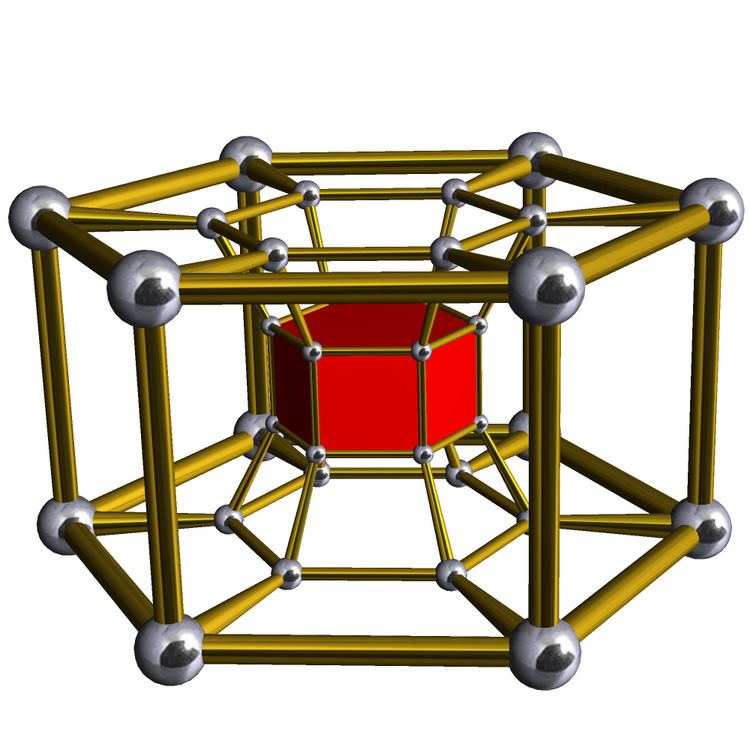 | ||
In geometry of 4 dimensions, a 6-6 duoprism is a polygonal duoprism, a 4-polytope resulting from the Cartesian product of two octagons.
Contents
It has 36 vertices, 72 edges, 48 faces (36 squares, and 12 hexagons), in 12 hexagonal prism cells. It has Coxeter diagram , and symmetry [[6,2,6]], order 288.
Images
Net
Seen in a skew 2D orthogonal projection, it contains the projected rhombi of the rhombic tiling.
Related complex polygons
The regular complex polytope 6{4}2, , in
6-6 duopyramid
The dual of a 6-6 duoprism is called a 6-6 duopyramid. It has 36 tetragonal disphenoid cells, 72 triangular faces, 48 edges, and 12 vertices.
It can be seen in orthogonal projection:
Related complex polygon
The regular complex polygon 2{4}6 or has 12 vertices in
The vertices and edges makes a complete bipartite graph with each vertex from one pentagon is connected to every vertex on the other.
